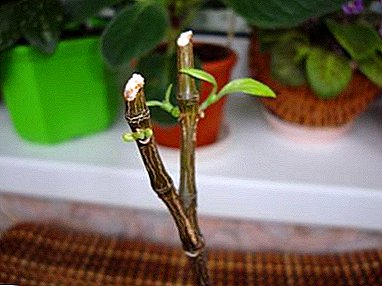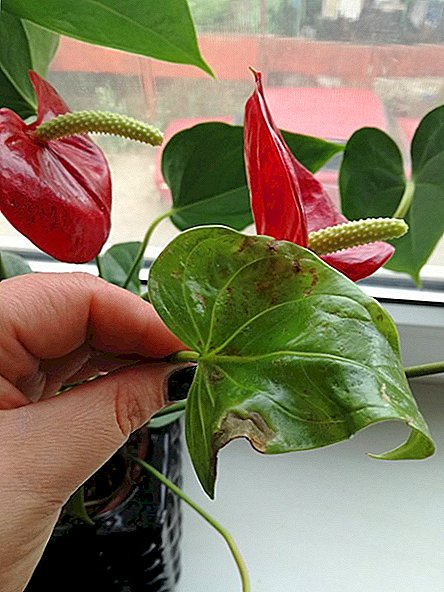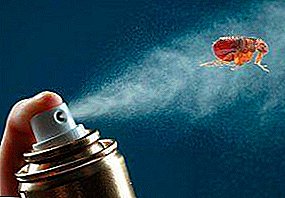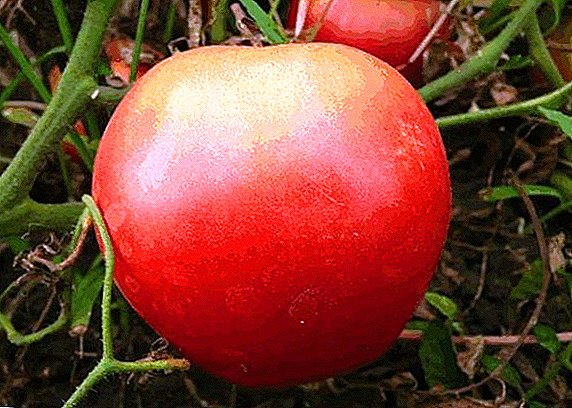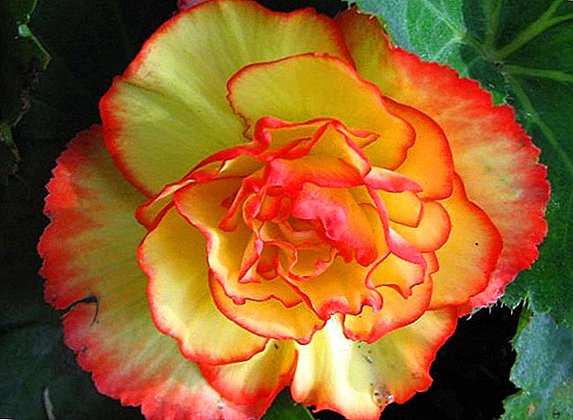 A rich and extremely beautiful flowering, a variety of shapes and sizes of begonias are the main advantages of this flower. How to save this beautiful flower in the winter, will be discussed in the proposed material.
A rich and extremely beautiful flowering, a variety of shapes and sizes of begonias are the main advantages of this flower. How to save this beautiful flower in the winter, will be discussed in the proposed material.
Basic rules for the maintenance of tuberous begonia in winter
In order for the plant to have more buds and large flowers in the spring, it is necessary to adhere to the basic rules for the winter maintenance of tubers:
- In winter, the tubers are not left in the open ground.
- Their digging is done immediately after the first frost - in October-November.
- When storing, nodules are sorted by size and age.
- For storage of tubers they use wooden boxes, cardboard boxes, plastic containers and flower pots.
- Dug-up tubers should be stored in a dry, cool and ventilated room (in the basement, on a warmed loggia, under a bath, etc.) in a special soil mixture - peat, sand, vermiculite, sawdust.
- Keep the shoots of plants need to complete winter.
Did you know? Begonia is an edible plant. Her tubers taste like citrus. The peoples inhabiting the territories near the Himalayas use it in cooking as seasoning.
Preparing for the winter
Preparing flowers growing outdoors for winter storage begins ahead of time.

It consists in the following:
- New buds that appeared in October are removed - this is necessary to preserve the flower of vitality.
- Approximately one month before the excavation of a flower, its feeding is stopped.
- If the begonia was grown in the tank, then stop its watering, and the capacity with the plant is entered into a dry and cool room. The bush growing in the flowerbed along with the land lump is dug out and transferred to the room. After 14 days, the tubers will take from the stalks all that they need, thereby acquiring the strength for wintering.
- The stems are cut to a height of 1-2 cm from the nodules, which are then cleaned of the soil and dried for 1-2 weeks.
- Exclusively healthy, tight specimens are taken for storage, with no signs of overdrying, mold or rot.
Important! A signal to the fact that the begonia needs to be brought into the room, are the first frosts. The witness of the plant for wintering is evidenced by its withered stem and yellowed leaves.
How to save the tuberous begonia in the winter at home
Two methods of storing tuberous begonia at home in the winter are most often used: in the basement (cellar) and in the refrigerator. Consider them in more detail.
Basement or cellar
This is the most common method, which is as follows:
- Dried tubers are placed in a wooden container (box or box).
- Powder on top of sawdust and sent to storage.
- The optimal indoor temperature is + 5 ... + 15 ° С.
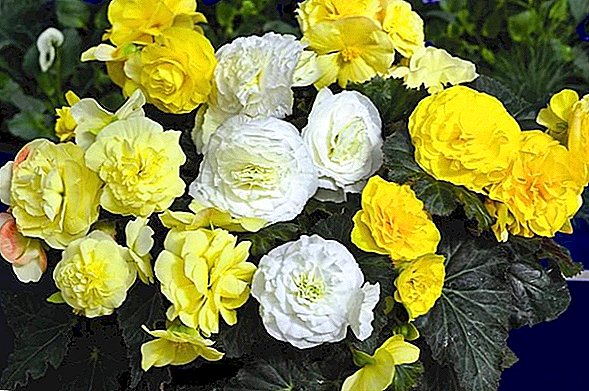
Fridge
This method is used in cases where there is little storage material.
There are 2 ways to store tubers in a cooling device:
- Sawdust is poured into a plastic bag and holes are made. Then put there nodules.
- Each tuber is wrapped in paper.
Both in the first and in the second case, the material is stored for storage in a refrigerator, in a compartment intended for fruits and vegetables.
Did you know? Because of the severe frosts that were in Russia during the war with Napoleon, the French army received a lot of frostbite. The emperor, who wore a cocked hat, froze his ears and began to hear poorly. After that, they began to call begonia "Napoleon's ear" because of the similarity of the lower burgundy part of the leaf of the plant with the frost-bitten ear.
How to keep a tuberous begonia in a potted winter in an apartment
The action algorithm is as follows:
- The flower is left in the pot.
- After the stems wither, they reduce watering as much as possible.
- As short as possible pruned stems.
- Capacity with a flower move to a cool place.
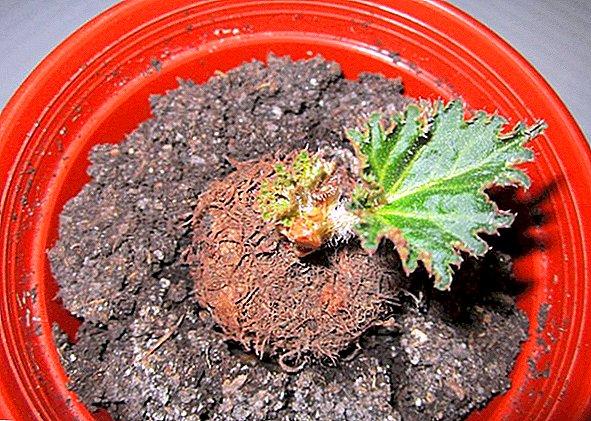
Features care in a dormant period
The rest period at a plant comes in the last days of October and the beginning of November. During this period, caring for a plant depends entirely on the way it is stored.
When stored in a basement (cellar) in a wooden container should:
- maintain optimum storage temperature;
- periodically inspect and sort out the nodules, and when rotting or molds are found, remove the affected tubers.
When storing a home flower in a pot, the plant should be watered no more than once a month. A sign of the need for watering - the soil is dry and separated from the tank walls.
Important! If the indoor flower from the autumn did not show signs of wilting and went green in the winter, then it is left to spend the winter in the same place, but in the spring it should necessarily be transplanted into a fresh substrate.
Terms of awakening of tubers
In the last days of March or at the beginning of April, the time comes for the plant to wake up, during this period buds begin to grow in begonias.
This time is most suitable for propagation by cutting and planting:
- 60 days before planting, the tubers are removed from winter tanks and transferred to a separate container for germination (planted nodules upside down).
- For successful germination, it is necessary to provide a temperature in the room of at least + 18 ° C.
- Watering should be daily. If these conditions are met, after 2-3 weeks you should wait for the first shoots.
- In early June, germinated plants can be placed on the beds, in places where there are no direct rays of the sun and wind.
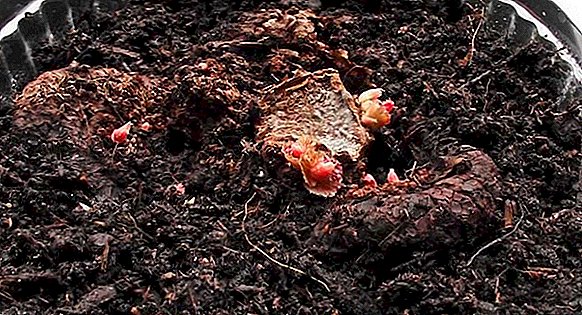
Useful recommendations
In the implementation of winter storage of tuberous begonia, it is useful to take into account some valuable recommendations.
Experienced florists advise:
- Do not remove the remaining green leaves from the plant. Gradually fading, they will give the tuber the nutrients it needs before hibernation.
- In a room where begonias hibernate, the air can be dried out due to the operation of heating devices. In this case, using a spray bottle, periodically moisten the area around the plant.
- The appearance of small sprouts in the tubers in winter is a signal of too high storage temperature. Sprouts need to break off, and the capacity with tubers to move to a room with a lower temperature or in the refrigerator.
- If during storage of tubers in a refrigeration device sprouts appear on them, then this will speak about high humidity. Tubers will have to sort, dry and wrap in dry paper.
Read more about the cultivation of tuberous begonia.
Tuberous begonias are very demanding in terms of conditions in the winter, but the effort expended will surely be rewarded with lush summer blooms.






